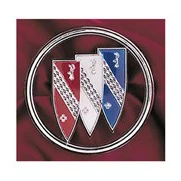Buick is a very familiar American car brand. It has been through 110 years since its birth in 1903. Now let’s review the Buick’s century-old car brand story, which happened during the development process. The story is divided into four parts, and this article is the third part.
Buick entered a period of steady development (1942-1972)
During the Second World War, General Motors Company accepted a large number of military orders, with a total price of about $1308.1 billion. Buick made a fortune in war once again, and it was mainly responsible for the production of aero engines and ambulances. For this reason, British Prime Minister Churchill was thanked by a personal letter. After the end of World War II, many new technologies developed in wartime began to be popularized in the civilian field, and Buick ushered in a period of rapid development.


In 1948, Buick took the lead in applying the hydraulic torque automatic transmission to the production car, which made the vehicle run more smoothly. This year’s Buick car advertising used this technology as a selling point, to promote the Dynaflow automatic transmission to the user can significantly reduce the frustration when shifting, and bring the “smooth as a bird flies” driving experience.


In mid-1949, Buick launched the world’s first hardtop convertible, the Roadmaster Riviera.
The overall shape of the car simulates the aircraft fuselage, the waist feature line extending from the front fender to the door, which will evolve into a classic design element for Buick. Its powertrain is equipped with a 5.2-liter inline eight-cylinder engine with a maximum power output of 140 horsepowers. It is also matched with an automatic transmission and a four-wheel hydraulic brake system. It is priced at $3,203 and has an annual output of 4343 units.


The 1950s was a golden age for the development of American cars, and the economic recovery has driven the rapid development of the automotive industry. In 1951, the fighter model inspired Buick’s design inspiration on the concept cars XP-300 and LeSabre. Lightweight materials, anti-collision structures, lower and wider body, high tail fins and other design elements gradually integrated into subsequent models, becoming the classic of the times. Two advanced technologies are also applied to LeSabre: dual fuel (gasoline and alcohol) and a humidity sensor that automatically turns off the convertible when it rains.


The growing US economy is pushing the automotive industry to move toward larger body and stronger power to meet the needs of the middle class. In 1953, Buick’s V8 engine with high compression ratio was born, and with the auxiliary technology of aluminum brake drum, it opened the high-performance era of Buick. To celebrate the 50th anniversary of Buick’s birth, the company added a limited edition model, the Skylark Convertible, to the Roadmaster product line.
It is powered by a 5.2-liter V8 overhead valve engine with a maximum power of 188 horsepowers and is equipped with an automatic transmission, brake boost, steering assist, and radio, etc. The car is priced at $5,000 and produced 1690 units that year. Due to the limited edition, owners can also choose to engrave their name on the steering wheel to show their uniqueness and personalization.


In 1954, Buick launched the world’s first four door, B-pillar free hardtop car and released it in 1955 models. From 1950 to 1955, Buick’s sales increased from 550000 to 745000, but in the late 1950s, Buick entered another trough due to outdated styles, product defects, and the popularity of compact cars. Its sales volume fell to 250000 in 1959. In 1959, Buick replaced the previous model series with three new models LeSabre (Special’s successor), Invicta (Century’s successor), and Electra (Roadmaster’s successor), and the Buick Three Shield LOGO also appeared for the first time.
In 1961, the more efficient Buick aluminum V8 engine was put into production and used in production cars, and the improved V6 engine based on this, taking into account fuel consumption and power output. As a brand new compact vehicle, Buick special uses the Buick 3.2-liter V6 engine called fireball in its open version, with the maximum output power of 198 horsepowers. This is the first time that the V6 engine has been used in mass production vehicles. In 1962, Buick special produced a total of 133900 units, of which 59200 were equipped with V6 engines. The introduction of new models and new technologies increased Buick’s sales to 450000 in 1962.

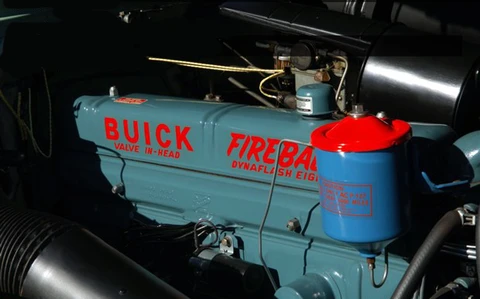
In 1963, the Buick Riviera model came out, which is different from the traditional design style of Buick. It shows the new design trend of Buick with pure and highly sculptural lines. When the word Riviera first appeared in 1949, it was used by Buick to describe the two door hardtop model, while the one introduced in 1963 is a vehicle with both driving pleasure and riding comfort. (Related reading: Real Shot 1965 Buick Riviera GS)

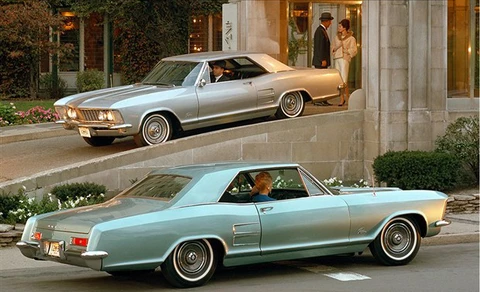
After 10 years of development, the Riviera in 1972 adopted some revolutionary designs, such as the famous ship-type rear, wrap-around center console, etc. The powertrain is powered by a 7.5-liter overhead valve V8 engine with a maximum power of 250 horsepowers and a 260-horsepower power pack is also provided. The car was sold for $5,149 in the same year, with an annual output of 33728 units.
Buick accelerates globalization (1973-2013)

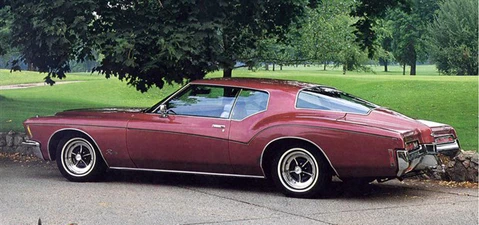
In 1973, Buick sales reached a record 820000 units, but the 1974 oil embargo caused a huge blow to the US auto industry, the entire auto industry fell into a trough, and Buick’s sales fell back below 500000 units. In the context of the oil crisis, energy consumption has become a key topic in vehicle design. In 1975, Buick improved the V6 engine again and began to use turbocharging technology. Buick’s pioneering technology also matured in the late 1970s, leading to the introduction of the first front drive Riviera S in 1979.
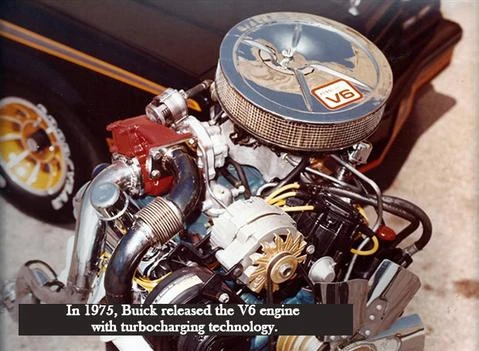
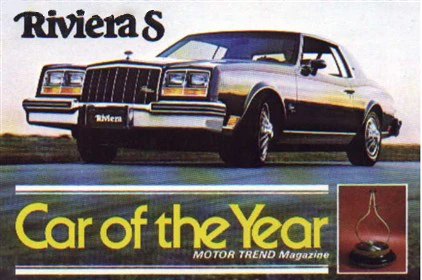

In the early 1980s, Buick’s market share increased while the whole US auto industry was hit by excessive oil prices. In 1984, cellular phones were first used by Buick in cars. In the same year, Buick’s annual global sales exceeded 1 million. In 1985, the Buick racing car with the V6 turbocharged engine won the first and second place in Indy 500 event. The average speed of the championship car was close to 220km/h.


In commemoration of Buick’s two-time manufacturer championships in the 1981 and 1982 NASCAR Touring Cars, Buick introduced the Regal Grand National high-performance model in 1984. On this basis, in 1987 Buick built the ultimate version of Regal GNX (developed by the famous American refit factory ASC and McLaren Power Technology Center). Its exterior shape is modified on the basis of the standard version of Grand National. The power system is equipped with a 3.8L V6 turbocharged engine with 300 horsepowers power output. The maximum torque is 488 nm, and the 0-96km/h acceleration time is 4.7 seconds, making it the fastest mass production vehicle in the United States in the 1980s. The car produced 547 units in 1987, and the basic price was $29,900.


In 1988, the Buick Reatta model was born. The car is known for its elegant design and quiet interior environment, becoming the most comfortable sports car in Buick’s history. This design concept has been inherited and evolved into the car running model in the following decades. In 1991, Buick introduced the 3.8L V6 supercharged engine, with 300 horsepowers and 400 nm of power performance, becoming one of the most famous engines in the 20th century. In the same year, the Buick Boulevard replaced the former Electra model and became the new flagship of Buick.

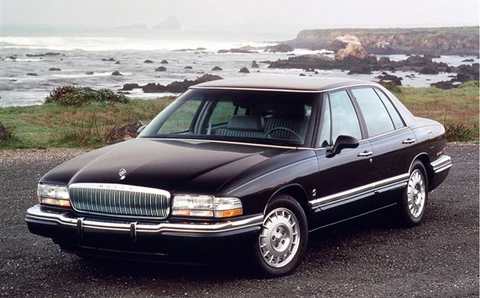
The 1995 Riviera is one of Buick’s representative models in the 1990s. It has an elegant appearance, smooth lines, and exquisite interior design. It comes standard with electric windows and doors, electric seats, driver seat memory and heating functions, automatic electronic locks, dual zone automatic air conditioning and other configurations. The powertrain is equipped with two engines, the 3.8-liter V6 naturally aspirated engine has a maximum power output of 205 horsepowers, and the supercharged version has a maximum power of 225 horsepowers. The chassis part adopts the former McPherson independent suspension, the rear towing arm torsion beam semi-independent suspension, standard four-wheel anti-lock disc brakes, and optional traction control system. The 1995 Riviera naturally aspirated edition is priced at $27,632, and the supercharged version is priced at $28,732, with an annual output of 41422 units.


In terms of market expansion, in December 1998, the first Buick New Century sedan which made in china drove off the production line in Pudong, Shanghai, from the construction of the factory to the new car offline for only 23 months. In 1999, GL8 opened the Chinese commercial vehicle segment. After entering the 21st century, the market focus of Buick brand gradually shifted from the US to the Chinese market. The successive listings of models such as Excelle and Regal have enabled Buick to gain a foothold in the Chinese sedan market. In 2006, Buick sold more than 300000 vehicles in China, and 250000 vehicles in the US domestic market, making China became the most important market for Buick brand in the world.

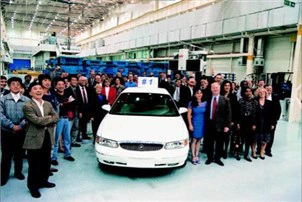
In 2008, the US auto industry suffered a general cold winter. Centennial General Motor
went bankrupt and reorganized in 2009. The new GM retains four brands, Buick, Chevrolet, Cadillac and GMC. The most important reason why Buick was left behind was its position in the Chinese market. By 2012, Shanghai GM Buick has gradually formed three product lines: one is a comfortable sedan (Jun Yue, GL8, Yinglang GT, Excelle), the other is a sports sedan (Junwei, Regal GS, Yinglang XT), and the third is an SUV model (Encore) to meet the growing demand of consumers.

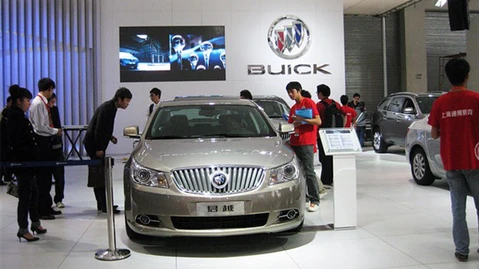
The establishment of three product lines has given the Buick Three Shield logo a richer connotation: blue, symbolizing elegant art, representing high-end comfortable models; silver, symbolizing innovative technology, representing high-end SUV models; red, symbolizing passion power, representing high-end coupe models.




